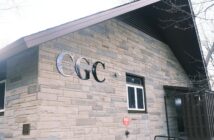Since the booming days of the Steel Stacks, much has been done to make Bethlehem’s cityscape a more livable and sustainable environment. Most recently, the Hoover-Mason Trestle transformed what was once a railroad to carry iron supplies from the ore yards into an elevated public walkway designed as a historic attraction and community recreation resource, but also as a museum of the expansive stacks and of the rise and fall of Bethlehem Steel itself.
Students looking for a running trail with a view or kids who want to play a game of pick-up basketball favor the toe path and community park that borders along the Lehigh River on the North Side. In Lehigh University’s own neighborhood, the Greenway has provided residents with not only a pedestrian path for recreation, but with reason to get outside and engage with the community. Included in the path are pieces of local artwork, a gazebo and a recently planted garden by Lehigh’s garden club.
These examples prove that the walkability of a city directly impacts how people engage and make use of the built environment around them and affects the entire physical and social environment as well. As more residents engage with their surroundings, they engage with each other. So often Lehigh students complain about the safety of the Bethlehem streets and the rate of crime that occurs, but typically that comes without really knowing the area and people that inhabit it.
In the words of Jane Jacobs, “The more successfully a city mingles everyday diversity of uses and users in its everyday streets, the more successfully, casually (and economically) its people thereby enliven and support well-located parks that can thus give back grace and delight to their neighborhoods instead of vacuity.”
Not only does more people on the streets — (or green spaces) influence the integration of a city, it provides additional eyes on the street to create a sense of security.
In 2009, new urbanist planner and designer Jeff Speck released his report on the walkability of Bethlehem after being hired to determine the strengths and weaknesses of the city’s pedestrian infrastructure. As a part of his many suggestions and ways of improvement, Speck called upon the need to improve pedestrian connectivity between North and South Bethlehem — a desire shared by many local residents, Lehigh students included.
More recent manifestations of this need resulted in a proposal for a Bethlehem pedestrian bridge, reserved exclusively for people on foot or bike. Heavy and constant traffic caused by the Hill to Hill bridge makes it anything but pedestrian friendly while the small cramped walk path along the Fahey bridge can also be daunting to runners, bikers or walkers going either direction. Many children also rely on this bridge to get to school on the opposite side each morning, which stresses the importance and potential for use of a safe route between the two parts of Bethlehem.
In my hometown of Chattanooga, Tennessee, a pedestrian bridge was erected as part of the city’s revitalization plan that would act as a connection between downtown Chattanooga and the Northshore. Today, many locals would argue that it is the focal point of the city. Dog-walkers, tourists, bikers and festival-goers stroll the bridge at all hours of the day-bringing not only activity and engagement between the two distinct areas of Chattanooga but allowing for increased economic investment in both sides of the city. Although Chattanooga is bigger than Bethlehem in population, this movement for a more connected and thriving cityscape serves as an example for what a city can become in the face of deindustrialization.
Although walking infrastructure is something mostly taken for granted in a city and rarely prioritized, pedestrian walkways close gaps and give everyone an increased and equal access to different areas of a city that may often feel disconnected. As we continue to imagine what the future of Bethlehem will look like in this phase of revitalization, we must focus on what makes the people themselves invested in their own city and the access they have to it and most importantly — to each other.
-Tru Taylor, ’16.





Comment policy
Comments posted to The Brown and White website are reviewed by a moderator before being approved. Incendiary speech or harassing language, including comments targeted at individuals, may be deemed unacceptable and not published. Spam and other soliciting will also be declined.
The Brown and White also reserves the right to not publish entirely anonymous comments.
1 Comment
Thank you for your perspective on the many changes made in South Bethlehem over the past few years. Most of these improvements have resulted in a decade or more of planning by some very forward thinking individuals and input from public meetings. Community development is a very long term process. Some very important steps have been taken to create the momentum and we need to keep it going. Our student population can help that by discovering how much there is to see and do within walking distance of Lehigh. College is about discovering yourself. Do that by discovering something new about your community. South Bethlehem has changed a lot since I was a student here 45 years ago. I learned much about this community then and am still learning about it today.